by Danny Mucinskas
On July 7, 2020, Harper’s Magazine published an online letter titled “A Letter on Open Justice and Debate,” which warned readers of a “censoriousness” and “intolerance of opposing views” that appears to be spreading in the culture of the United States, leading to “public shaming and ostracism” and “calls for swift and severe retribution.” The letter was signed by dozens of prominent academics, writers, and others from across the political spectrum, including Margaret Atwood, Noam Chomsky, Francis Fukuyama, Linda Greenwood, Wynton Marsalis, Salman Rushdie, and Gloria Steinem.
Overall, the signatories expressed concern that free speech is being restricted, warning that lack of open debate “invariably hurts those who lack power and makes everyone less capable of democratic participation.” They cite no specific cases but are ostensibly referring to several incidents that occurred in the wake of racial justice protests around the country, such as the firing of data analyst David Shor for posting research supporting non-violent protests and the resignation of James Bennet of The New York Times following the publication of a controversial op-ed from Sen. Tom Cotton of Arkansas calling for military intervention to quell unrest.
The letter immediately sparked controversy and criticism from detractors. Some felt that the letter was an attempt by those in positions of power to simply preserve ability to speak with impunity. Members of the transgender community spoke out, believing the letter to be problematic, especially as it had been endorsed by J.K. Rowling, who has recently come under fire for intolerance towards trans women. Others questioned why the letter was even published, at a time when the world is dealing with a global pandemic and the United States is facing a reckoning over racial violence and inequity. At least one signatory retracted her name, while another apologized for signing.
Others who signed have doubled down, though, saying that free speech and debate is a core tenet of liberalism, and that only by continuing to engage with and argue against opinions that we find uncomfortable will society make progress towards being more just and free.
One of The Good Project’s core principles is that personal views on contentious issues and dilemmas are influenced by the values that each of us believe are important, values such as those contained within our value sort activity. For example, an individual who values honesty above all else may choose not to cheat on a test; someone who values material well-being may choose to take a well-paying job they don’t enjoy simply to get a higher salary.
On a political level, Jonathan Haidt (who also signed the Harper’s letter), a social psychologist at New York University, has proposed moral foundations theory as a way to explain our policy preferences and reactions to social debates. Moral foundations theory proposes six core universal tensions that influence our views of ethical questions:
Care vs. harm
Fairness vs. cheating
Loyalty vs. betrayal
Authority vs. subversion
Sanctity vs. degradation
Liberty vs. oppression
Haidt’s research has shown that political preferences in the United States are tied to these foundations, with liberals prioritizing the care/harm and fairness/cheating dynamics above others and conservatives valuing all six foundations more equally. In the same way that differences in values cause people to make different individual decisions, the prioritization of moral foundations causes people to come to different political conclusions, aligning themselves with certain ideas, parties, or policies. The way that these foundations manifest in people’s opinions can also sometimes be confusing and vary or seem to conflict depending on the issue: someone who values the liberty of free speech may oppose abortion rights, an issue affecting women’s liberty, for reasons of sanctity; someone might support a free childcare policy for reasons of care, but oppose debt forgiveness for educational loans for reasons of fairness.
Perhaps the debate sparked by the Harper’s letter is a conflict between moral foundations of liberty and care playing out on the U.S. national stage. Should the liberty of free speech be valued at all costs, even if it causes harm to particular people or marginalized groups? Or should care be valued at all costs, even if it completely silences people from being able to express alternative viewpoints with liberty? Where is the line between these two extremes?
When I complete the value sort exercise, my most important values include “openness,” or being receptive to new ideas, and “pursuit of common good.” Perhaps this is why my opinions on this debate may feel frustratingly “in the middle” in an era of ever more polarized conversation on social media and a climate in which extreme views get the most attention in our media.
In my view, no person is entitled to have their opinions go unquestioned, and the panic surrounding “cancel culture,” which some of the signatories are likely reacting to, seems unfounded. Individuals with public platforms, including the letter’s endorsers, should always be prepared to defend their stances to others, such as those on social media who may disagree with their stances, sometimes in large numbers in a way that can be overwhelming. This is not “canceling,” but is a form of debate in itself. At the same time, we should not simply silence opinions we disagree with, or dole out extreme punishments for making mistakes. Changing other people’s values often takes engagement and convincing, not berating and silencing. As The Better Arguments Project (with which The Good Project recently collaborated) and their “Five Principles of a Better Argument” illustrate, debates require participants to listen passionately, embrace vulnerability, and make room to transform, even when we absolutely disagree and want to take a stand for our side.
However, I am only a single individual, and the majority view on these issues is likely to decide how care and liberty are to be prioritized and debates over free speech are to be resolved, if at all, since the fault lines represented by the moral foundations have existed in American society for centuries. Additionally, individual sectors, such as journalism, may develop new standards regarding speech that will set the norms for that field and the actors within it. For now, the answers to the questions I pose are difficult to discern, as we seem to be in the middle of a culture shift that will define the bounds of acceptability for years to come.
When does free speech “cross a line”? What consequences should an individual face for crossing that line? At what point could stifling free speech or shaming particular speech become dangerous? What values are most important to you in forming these opinions? If you are outside the United States, are there parallel or similar debates occurring in your country?
Recommended Reading: The “free speech debate” isn’t really about free speech







